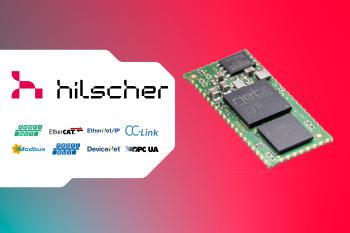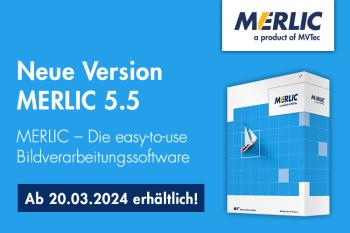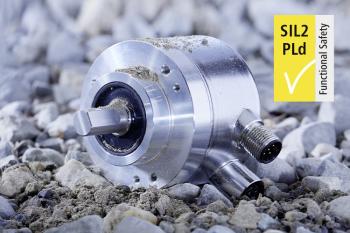Electrically Tunable Lenses in Imaging and Machine Vision
13.08.2015 -
Electrically tunable lenses are a powerful tool for any application that deals with varying distances between the vision system and the objects under inspection. Prior to the advent of the liquid lens technology, these issues were addressed by using bulky motorized zoom lenses or moving either the camera or the object to the required working distance.
Alternatively, one might have used lenses with a large depth of field, often times leading to high f-numbers – significantly limiting the image acquisition rate and possibly reducing the achieved resolution due to diffraction.
Focus tunable lenses offer various advantages compared to these solutions. The range of optical power they provide allows for focusing objects at a wide range of working distances – reproducibly and within milliseconds. A liquid lens solution is also very compact and can even be suitable for integration in handheld devices. Without relying on any moving parts millions or even billions of cycles are specified, significantly increasing the time before failure compared to alternative solutions. Last but not least, when compared to other solutions the tunable lens approach involves less cost in most of the cases, especially when the use of multiple camera systems can be avoided.
With these advantages in mind, it becomes clear that electrically tunable lenses have a great potential in the future Imaging and Machine Vision industry, as they perfectly serve the growing need of fast imaging systems that focus on high throughput and reliability – while adding a significant degree of flexibility at the same time. In Europe, there are two prominent companies whose products have proven that electrically tunable lenses have matured and are suitable for industrial environments. Varioptic, founded 2002 in Lyon, France, is relying on electrowetting, whereas Optotune, founded 2008 in Zurich, Switzerland, uses tunable polymer lenses. In the following, both technologies and the respective products are introduced, followed by an overview of applications that benefit from their advantages and concluding with a quick glimpse on future developments.
Electrowetting – Varioptic
Electrowetting describes how the wetting properties of a surface can be manipulated by electric fields. Looking at a drop of water on a metal surface, the shape of the drop, quantitatively measured by the contact angle, will be determined by the surface tensions between the three media: water-metal, metal-air and air-water. Now imagine adding a thin insulating layer between water and metal and applying a voltage: It is intuitive that the electric field in the fringing part of the droplet will force it to increase its contact area with the metal sheet, thereby changing the contact angle as well as the overall shape of the droplet.
Varioptic's liquid lenses use a sealed cell containing two immiscible liquids, a combination of a water solution and an electrically non-conductive oil (Fig. 1). The liquids differ in refractive index, thereby providing optical power as soon as their interfacing surface is curved, but have identical densities. The latter enables to obtain a perfectly spherical interface between the liquids, insensitive to gravity, vibrations and shocks. Using the electrowetting effect, the interfacing surface between both liquids are manipulated by changing the applied electric potential: The conductive water solution experiences a change in electrostatic pressure, causing the interfacing surface between the two liquids to change its radius of curvature. In other words, the focal length of the lens is changed by manipulating the voltage. This process can be run on a timescale of tens of milliseconds and has proven to be hysteresis-free and thus highly reproducible for more than 500 million cycles. Due to the capacitive nature of electrowetting there is no internal heating of the lens, so there are no issues of thermally induced change of focus caused by self-heating. In addition, due to the low power consumption these lenses are of interest for battery-powered, mobile devices as well. Last, due to its nature Varioptic lenses are non-sensitive regarding polarization. Challenges for this technology rise when it comes to larger apertures. In order to manipulate the shape of large aperture liquid lenses, the necessary electrostatic force, which by its nature is comparatively weak, would require very high voltages. At this point in time, Varioptic's autofocus lenses, the Arctic 316 and 39N0 are available in 2.5 and 3.9 mm clear aperture, respectively. Besides the Arctic lenses, Varioptic offers a variety of different focal length S-Mount and C-Mount imaging lenses as well.
Shape-changing Polymer Lenses – Optotune
Optotune offers both, electrically and mechanically tunable lenses. The design consists of a container, which is filled with an optical fluid and sealed off with a thin elastic polymer membrane. The deflection of the membrane is proportional to the pressure in the cell, which is controlled by an electromagnetic actuator (Fig. 2). Hence, the optical power of the lens is controlled by the current driving the actuator, exerting pressure on the container. The electrically tunable lenses respond within a few milliseconds, are hysteresis-free and have proven to work reproducibly and reliably for more than one billion cycles. As they rely on current-driven actuators, they only require low operating voltages of up to 5V. In addition, they are specified for high laser damage thresholds of up to 2 J/cm² (ns- and ps-pulsed at 1064 nm) and despite of using polymers, they do not alter polarization, which makes them highly attractive for laser applications. Another advantage of this approach is the option to use fluids with different optical properties. The low dispersion fluid, for example, has an Abbe number >100 and thus introduces practically no chromatic aberrations. Electrical lenses can be as large as 6 (EL-6-18) or 10 mm (EL-10-30) clear aperture, where the latter is available in three different housings. Larger apertures of up to 55mm have been realized with a mechanically actuated design, where the focal length is controlled by a ring, which is turned either by hand or by a motor.
The challenge of these lenses is related to one of their benefits: Their large aperture. If operated in a vertical position (optical axis horizontal), lens deformations due to gravity will induce a certain amount of coma, which can lead to a slight deterioration of the image quality. While depending on the size of the lens, the density of the optical fluid and the elasticity of the membrane, the effect and its trade-offs are well understood and the RMS wavefront error is quantitatively described in the respective lens data sheets. One last feature is quite notable: Since these lenses actually draw current, they dissipate power and thus heat themselves. For this reason, most Optotune lenses come with an integrated temperature sensor. Combined with characterization data stored in an EEPROM, this allows for compensating temperature-drift induced changes in optical power to an accuracy of typically 0.1 diopters, which is usually within the depth of field.
Today's Applications and Future Developments
A very successful field of application for electrically tunable lenses is Barcode Scanning. Combined with a distance sensor, it is possible to scan barcodes on products of different height or at different positions on a conveyer belt without any mechanical manipulations – with high accuracy, high speed and high reliability. Cognex's Dataman series and Datalogic's Matrix 300 are stationary barcode readers that utilize liquid lenses, and both companies offer handheld devices based on liquid lenses as well.
Another application benefitting from tunable lenses is automated inspection using liquid lens microscopes. Since microscopes offer large back focal lengths, it is easy to implement a liquid lens module at the rear of the objective, which allows the user to quickly cycle through different depths of field – incredibly powerful to overcome depth of field limitations, especially when imaging at high magnifications. This is the idea behind Edmund Optics' Dynamic Focus VZM Lens, currently available via Edmund Optics Inc. (Fig. 3).
Electrically tunable lenses are able to add an immense degree of flexibility with only a minimal decrease in image quality. Keeping in mind the current trend to design fast and highly reliable imaging systems that focus on high throughput, it is fair to assume that liquid lenses will play an even bigger role looking forward. A major challenge will be the development of larger aperture lenses while maintaining the high image quality and tuning speed of today's lenses as much as possible. In 2015, Varioptic will launch the Visayan lenses, an 8 mm clear aperture multi-electrode design allowing for non-spherical surfaces – and by that being able to adjust focus, tilt and correct astigmatism at the same time. Also in 2015, Optotune will introduce their new EL-16-40-TC series, electrically tunable lenses of 16 mm clear aperture with mechanical mounts optimized to work with off-the-shelf imaging lenses.
Aside from the industrial part of the Imaging and Machine Vision market, there are other fields where this technology already has an impact as well. For example, tunable lenses allow for extended depth of field in dental cameras, fast z-stacking in various types of microscopes, 3D marking in laser processing systems, refraction control in ophthalmic equipment and variable spot size of LED lighting. Also, aiming at the big consumer market, electrically tunable lenses for smart phone cameras and camcorders are currently in development. It will be interesting to see where product development will go from here in the following years and which markets pick up this technology to increase performance and provide new features.
The author deeply thanks Mark Ventura, VP Sales & Marketing, Optotune, and Samuel Grand, Business Unit Director, Varioptic, for their support of this article.
Author
Dr. Boris Ecker, Imaging Solutions Engineer






